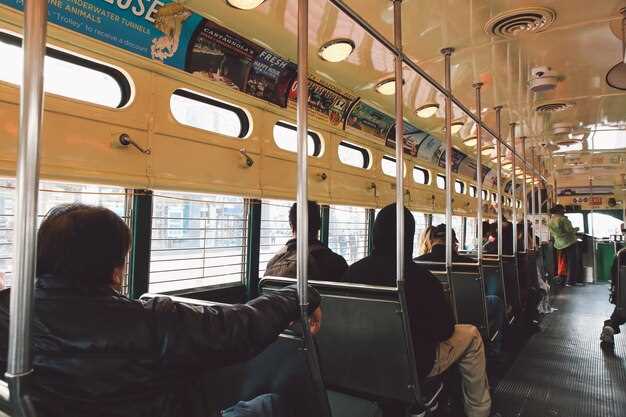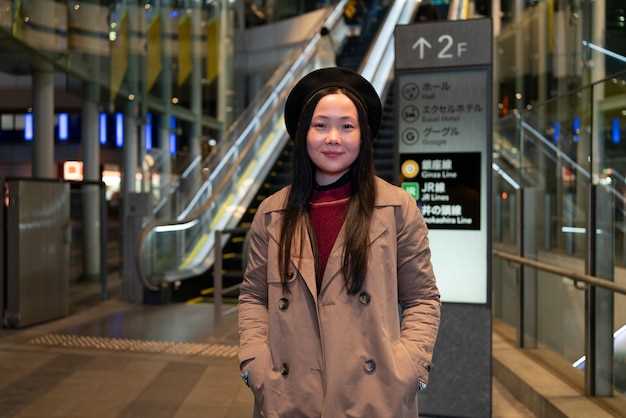Think fast: get a rechargeable fare card before departure; top up at gongzhufen kiosks, dongzhimen stations for a smooth start.
Within the core, think about peak hours; the metro runs every 2–3 minutes during peak hours (07:00–09:00, 17:00–19:00); roughly 5–8 minutes off peak; signage in English at major hubs, including dongzhimen and gongzhufen, plus others.
Bus lines reach zones beyond core; typical headways 8–12 minutes; last runs around 22:30; check stops near hotels; parking at large hubs may be scarce; plan to reach a hub before 20:00; consider following options around a hub.
For shorter hops, rickshaws remain a quirky option in select lanes; always confirm operation hours, pricing with the driver, preserving friendship with locals.
Distance between districts matters; use the following approach: start at downtown, target 2–3 stations per leg, switch to a different line at major transfer points; monitor line closures via the official app.
Within service networks, kunyun, dabeiyao, district links connect to banks; parking facilities; people who share rides help shape effective travel for visitors; shanghai serves as a useful comparator for pace and choices.
Beijing Transportation Guide: Practical Transit Options

Riding the metro is the fastest way to move through the capital when street traffic is heavy, which keeps journeys predictable. Tickets cost 3 CNY for the first 6 km, 1 CNY per extra 5 km; generally this covers most central routes, from the palace area to the northeast district, some routes are made for quick hops.
Subway travel remains reliable from lianhuachi toward major scenic spots; peak hours hit roughly 7:00–9:00; 17:00–19:00, crowds swell, slowing some rides.
Intercity coach lines run along the expressway to suburbs, reaching scenic palaces plus parks outside the core. Tickets are sold at terminals; schedules appear on mybeijingchinacom to pick the right models for travel, with Chinese license rules applying to drivers. Avoid illegal taxi drivers (often called black cabs); use licensed services.
Traveling light reduces delays during a trip; a little planning speeds transfers; know that tickets can be loaded to a mobile wallet; northeast routes often feed into the capital core. Every traveler should verify every transfer point before leaving.
Train and Subway Essentials
Recommendation: obtain a rechargeable card at arrival hall; switch quickly between trains, buses; one card covers most journeys, avoiding queues for individual tickets. Beginning your journey with this setup reduces delays.
- Card options: rechargeable card; price includes cny10 deposit; top-up at machines, banks; refunds possible at stations.
- Network scope: largest urban rail system in the region; more than 20 lines; coverage spans north areas, central districts, suburban belts; transfers between lines occur at major interchanges; among tourists, this setup remains popular for flexible itineraries; they appreciate reliable schedules.
- Pricing and tolls: price policy based on distance; using the card lowers per-ride cost; there is no toll on urban routes; tolls apply to cross-regional journeys beyond city limits.
- Arrival guidance: begin at the arrival hall; follow bilingual boards; platforms labeled for northbound services; there are staff near information desks; telephone lines provide directions when needed.
- Tourist tips: transfer rules differ by line; their transfer guidance appears on boards; they can choose lines with fewer transfers; most travellers succeed with a single card; they often start from central hubs.
- Experience notes: some lines offer scenic stretches along rivers or parks; citrons stand nearby at snack kiosks; roads around the stations can be busy during rush hours; this makes staying near a hub advantageous at journey’s beginning.
- Practicalities: begin by verifying the card status at arrival; their use continues across several days; there is no need to carry cash for most rides.
Taxi Etiquette and Fares
Always switch on the meter; taxis will refuse fixed prices if pressed; request a meter printout before leaving the street queue.
Fare basics: base fare around 13 CNY for the first 3 km; rate roughly 2.3 CNY per kilometer thereafter; waiting time 0.5–1 CNY per minute; airport toll around 20 CNY; expressway tolls may apply, depending on route.
Hours of operation are around the clock in the capital area; peak periods 07:00–09:00; 17:00–19:00 bring higher demand; night periods 23:00–05:00 may trigger extra charges depending on policy.
Start your ride at a street corner with a clear destination; specify district or hotel name; share your telephone contact for updates if needed.
Geography note: in fangzhuang southwest region, taxis tend to be plentiful mid day; trips to northeast districts or toward hebei border may incur longer distances; plan accordingly.
Airport pickups require designated gate areas inside terminals; head to the airport gate, ready with destination; long queues occur during holidays.
Vehicle models vary; newer models feature luggage racks, GPS; for bicycle transport, request a larger car or a foldable carrier before departure.
In hotels near the capital center, curb pickup lines operate more smoothly when you arrive early; especially during peak seasons, have a map view ready on mybeijingchinacom.
For years, riders in the capital region relied on meters; start of ride occurs when the meter activates; base charge around 13 CNY.
Make sure the route, time; tolls appear clearly on the meter display.
Airport Access: Flights, Expressways, Monorail, and Buses

Recommendation: know the fastest route, take the airport express to the city core; arrival typically 30–40 minutes; trains start at 6:00, last at 22:30; price approximately 25 CNY; buy a stored-value card at the counter; signs point to Dongzhimen; daily operation keeps the line reliable. While you wait, reading signage helps.
Expressways: direct connections from the terminal to inner zones; distance 15km to the center; travel time in off-peak hours 25–40 minutes; during rush hours expect longer; tolls apply.
Monorail: route serves Taipingzhuang with a stop near the terminal; core area transfer takes 15–20 minutes; headways 8–12 minutes; hours 07:30–22:00; ticket 7–20 CNY; beijing-pinggu corridor is accessible by a short bus link from a stop.
Bus network: direct services to Palace district, Fangzhuang, beijing-pinggu; first departures around 05:00; frequency 20–30 minutes; trip times 40–70 minutes depending on traffic; prices 15–30 CNY; some stops marked with citrons icons; signage helps.
Practical notes: reading route boards helps; during transfer, negotiate prices with staff to save minutes; during rush hours expect longer hours; for beijing-pinggu plan 60–90 minutes; choose among options by location, hours, and price; building upgrades over years have improved reliability; little waiting is needed if you know the stops and how to reach the palace area.
Bus Travel and Sightseeing Bus: Tickets and Tips
Begin with a 24-hour pass for sightseeing routes; varies by operator, price roughly cheaper than single rides, plus flexibility to hop between major lines. This choice appeals to tourists, especially when exploring scenic hutong corridors, local markets, outer lines connecting airport gates.
Ticket desks near gates, hotel receptions, official apps, authorized kiosks.
On board: seating with windows facing the route; if seats are scarce, standees fill the middle. Check route number on the display, not just the roof sign.
Routings pass through hutong zones, scenic riverfront, large squares; roads vary between north and southwest districts; the line reaches fangzhuang, shanghai, citrons stalls nearby; travelers experience year-round views. Some routes drift toward north hebei outskirts for a broader view; this variety keeps a traveler busy for hours.
Airport connections feature a dedicated line set; main movements involve locals, tourists; hours vary by route. Some lines begin near hotels, others run close to transit hubs; ticketing remains straightforward for beginners.
Let reliability guide choices: windows reveal city scenes as vehicles glide past black exteriors; built to handle year-round use, they offer a direct look at staples like hutongs, markets, and new districts; travel groups from southwest zones often review shuttle timings to minimize waiting times.
For authoritative details see official bus information.
Local tip: mybeijingchinacom
| Ticket Type | Best Use | Typical Cost | Purchase Points |
|---|---|---|---|
| 24-hour sightseeing pass | Unlimited hops on main lines | 25–60 CNY | Gates, hotels, official apps |
| Single-ride ticket | One trip on a single line | 1–3 CNY | Ticket offices, kiosks |
| Sightseeing loop ticket | Access to multiple major stops | 20–50 CNY | Stations, official apps |
| Airport express bus | Direct drive to terminals | 12–40 CNY | Airport gates, transit hubs |
Non-metro Options: Waterways, Pedi-cabs, and Cycling
Recommendation: Start with a private ride for quick hops; then a bicycle loop spanning 15km to see riverfront scenery; just plan to return before hours end with your preferred route.
- Waterways: board at gongzhufen gate; downstream toward central riverfront; riding along the river path; first trips start at dawn; last departures by dusk; express services available for short hops; prices vary by distance; recent updates made more private express boats available; 15km loops may cost 15–40 yuan; private boats offer flexibility; boarding points near lianhuachi side; route passes wall sections; times often change with weather; recommended to confirm hours; craft models range from rowboats to motorized skiffs; always carry cash; avoid black market operators; made for tourists.
- Pedi-cabs: private rickshaws; price depends on distance; short hops 5–15 yuan; longer trips 20–50 yuan; operating hours 07:00–19:00; start from gongzhufen gate; routes toward lianhuachi side; center area near the city wall; typical 1–3 km ride around 10–20 yuan; 3–5 km around 25–35 yuan; negotiate price at start; charge is per ride; avoid black colored street vendors that quote inflated numbers; always get a clear quote before departure.
- Cycling: bicycle rental shops; models vary; price 30–60 yuan per day; deposit often required; start from center near lianhuachi; routes run along riverfront; common loop spans 15km; times vary with weather; operating hours 06:00–20:00; ride with traffic flow; stay on bike lanes; park near the wall after finish; avoid busy streets during peak times; always wear a helmet; keep bags in baskets; return to the same shop to avoid hassle; black bag theft warnings, avoid leaving valuables in baskets; you can ride down river side lanes for a scenic start.

 Beijing Transportation Guide – Subways, Buses, and Public Transit Tips" >
Beijing Transportation Guide – Subways, Buses, and Public Transit Tips" >



















